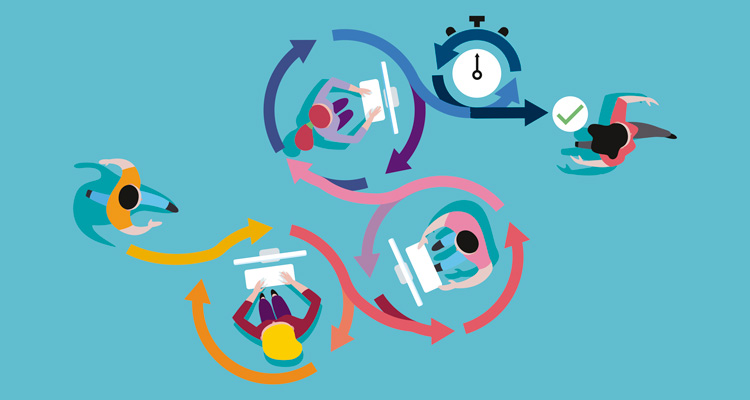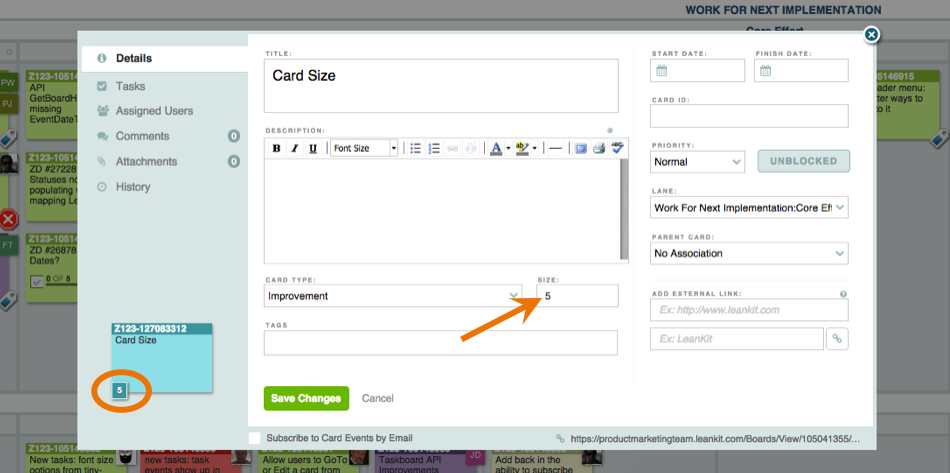
Many teams find it useful to identify and track the size — or amount of work — associated with each work item. Planview AgilePlace lets you easily assign a size value to each card, manage your WIP based on card size, and run reports using size as a variable.
In Planview AgilePlace, size is an optional field that you can update in the Details tab. When you enter a number into the Size field, you override the default card size of one and assign the appropriate amount of effort to the work. The card size appears on the face of a card, ensuring visibility for the entire team.
Sizing Approaches
Sizing can help teams plan and groom their backlog, understand how much work is in process at a given time, and analyze metrics such as cycle time and throughput.
Approaches to sizing — or assigning points — vary by team and can range from using a t-shirt size (e.g., 1 equals extra small, 2 equals small, etc.), a scale of 1 through 10, the Fibonacci sequence (1, 2, 3, 5, 8, 13, etc.), or a detailed estimate for hours of effort. In manufacturing, card size is also used to designate how many widgets need to be built — often resulting in much higher card sizes.
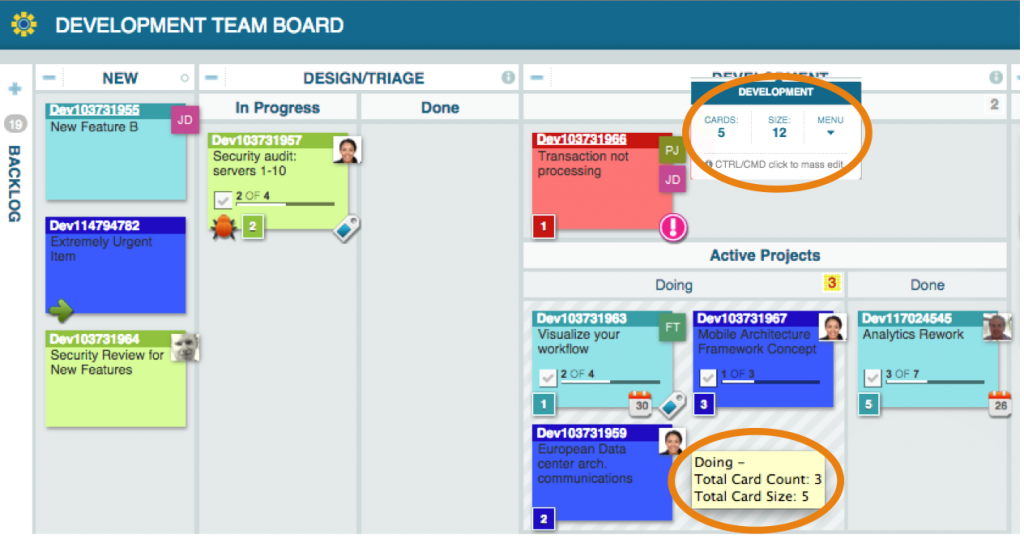
Once your team agrees upon an approach to sizing and captures this information for each work item in Planview AgilePlace, you have the option of using size to manage your work in process (WIP) limits.
WIP Limits Based on Card Size
WIP limits can be established for lanes, including sublanes and swimlanes, and for board users. To learn more about how to setup WIP limits, read here. Once WIP limits are established, update the setting in Planview AgilePlace to “Base WIP Limits on Card Size” (see below for more details). Once this is in place, WIP limit warnings and override events will be calculated on card size rather than the number of cards.
Here’s an example of standard WIP setup. The lane WIP limit is set to three and is based on the number of cards in each lane. These two cards have a combined size of four, but there is no WIP limit warning or override as the number of cards has not been exceeded.
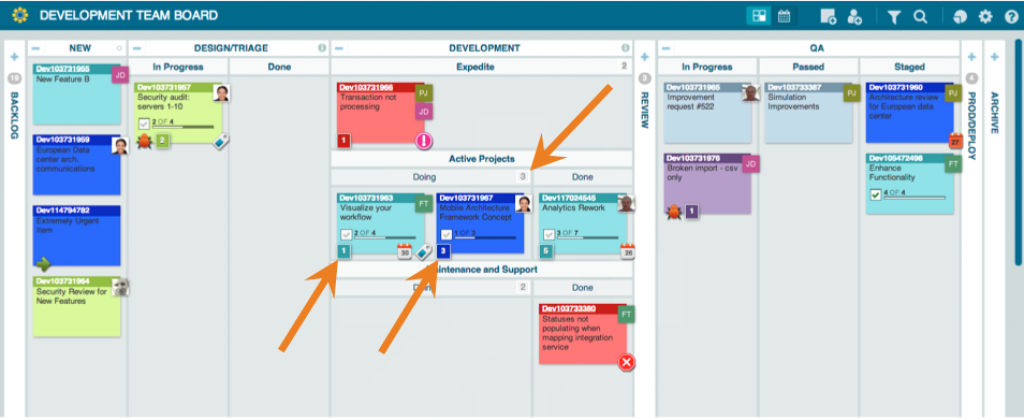
When a fourth card is later pulled into this lane, the system requires a WIP limit override and the lane, along with the WIP limit number, stays red until the WIP limit of three cards is once again observed.
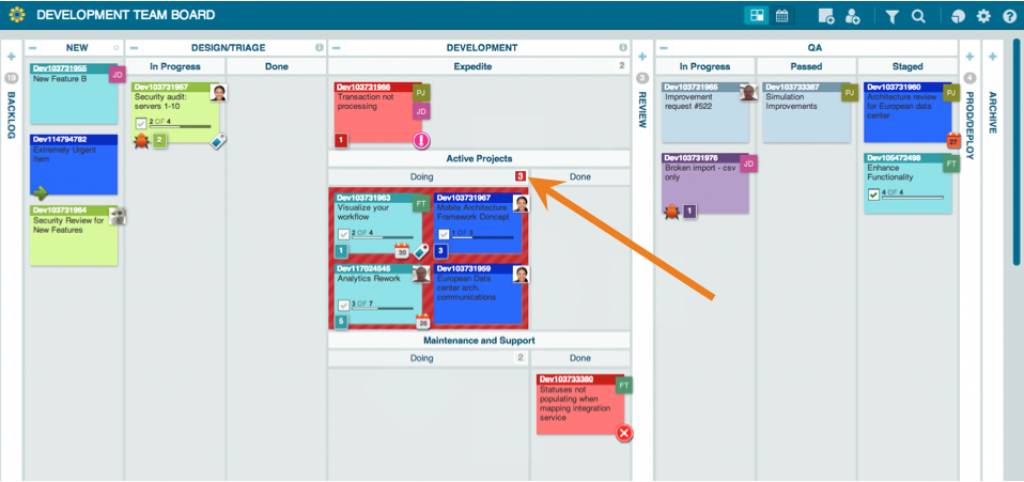
Now let’s take the same example and base the WIP limit on card size. The two cards highlighted have a combined card size of four, which exceeds the established WIP limit of three and also requires a WIP limit override.
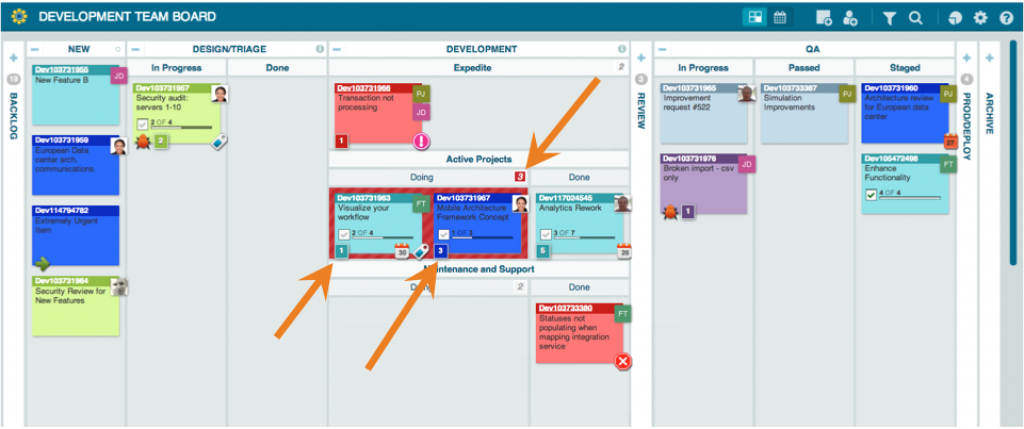
This same logic is applied to WIP limits for board users. If the setting to “Base WIP Limits on Card Size” is not selected, then the user WIP limit is based upon the number of cards assigned to the user. If the setting to “Base WIP Limits on Card Size” is selected, then the WIP limit warnings and overrides take the total card size assigned to the user into account.
How to Set WIP Limits Based on Card Size
For existing boards, click the Settings icon on the top bar. Next, click Settings from the drop-down menu. You will be on the Board Settings tab. Check the box next to “Base WIP Limits on Card Size.”
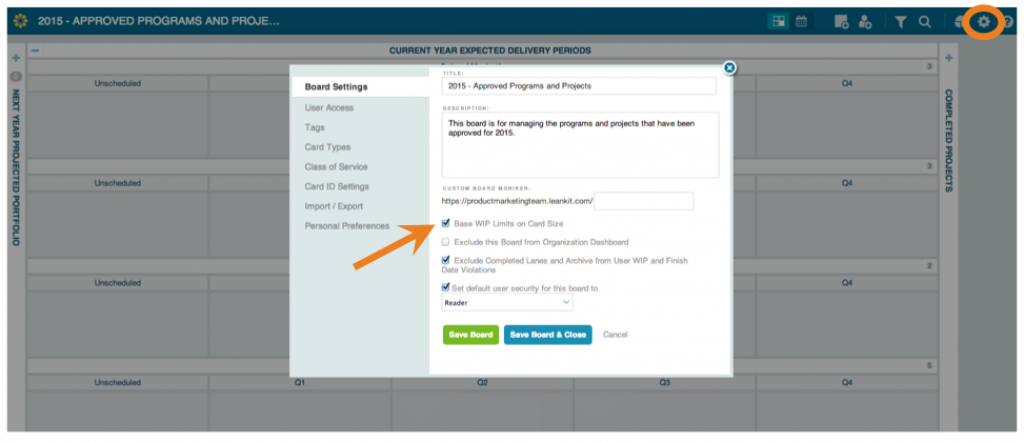
When creating a new board from the Planview AgilePlace Home Screen, check the box next to “Base WIP Limits on Card Size” in the Create New Board tab to enable the setting.
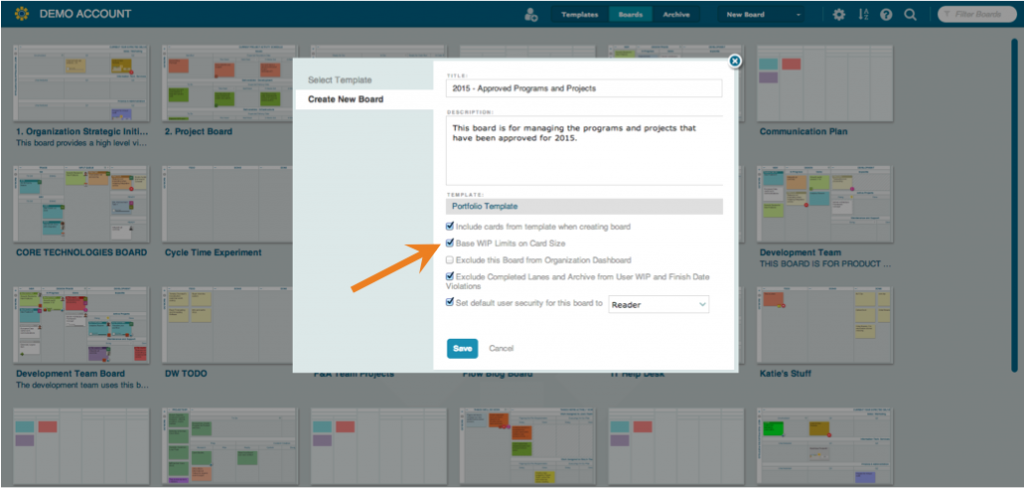
Applying the “Base WIP Limit on Card Size” setting lets you easily identify when the estimated effort associated with work in process is overloading the system or team. To learn more about limiting your WIP, read our blog post on WIP Limits: How to Journey (safely) Into the Unknown.
Using Card Size as a Variable in Reports
Teams can also use card size as a variable in Planview AgilePlace reports. Calculating analytics based on card size provides useful insight into how effectively work items are flowing through your system. For example, rather than saying the average card takes five days to complete, you could say that the average card with a size of three takes five days to complete and then compare this to the average time a card with a size of five takes to complete.
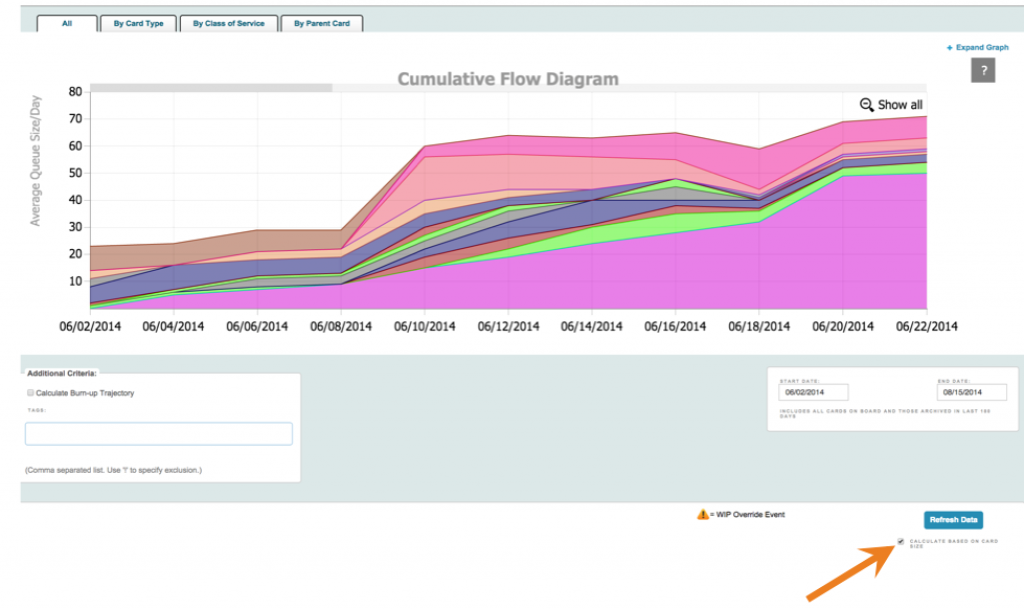
Reports Based on Card Size
To run a report based on the size of the cards on your board, click the “Calculate based on card size” checkbox found on the bottom right of the report window (below the start/end date selection fields).
Each report (including Cumulative Flow, Cycle Time, Card Distribution, Efficiency, and Process Control) has a setting option to calculate based on card size.
The average Cycle Time report shows the amount of time it takes to complete work items from start to finish.
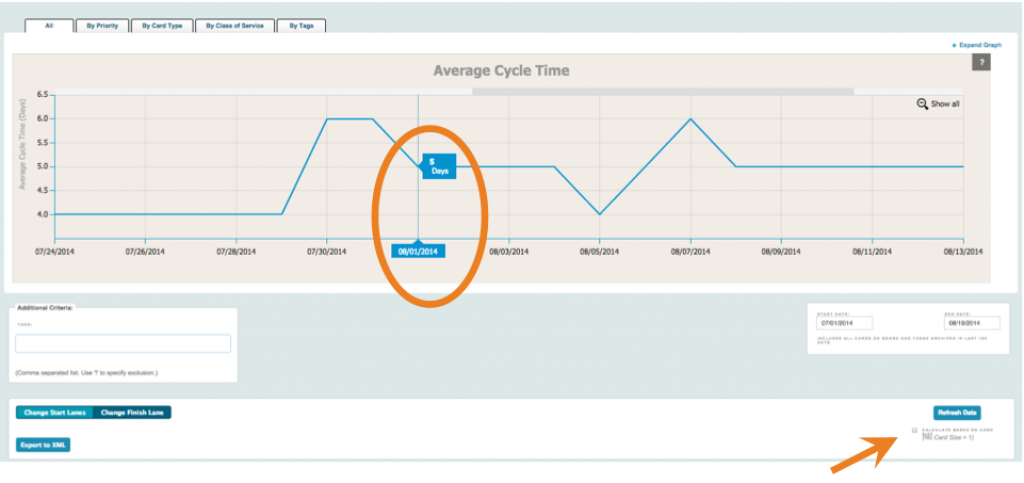
Average cycle time based on card size provides additional insight into work throughput.
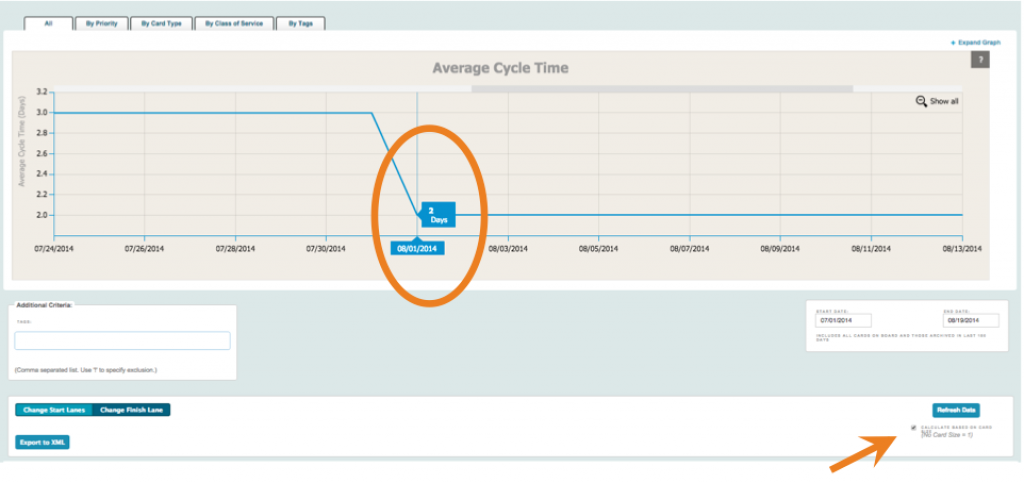
Understanding how work items of varying sizes move through your workflow can help in re-distributing workload, determining where larger size items get held up, breaking work down into smaller batches, and forecasting throughput for similar work.
Manage Your Work More Effectively with Card Size
The card size field is an available option in all Planview AgilePlace editions and allows you to capture estimated effort for each work item to assist in planning and managing work. Limiting your WIP by card size and running reports using card size as a variable gives you better insights to understand where bottlenecks are occur and how to improve your flow of work.

